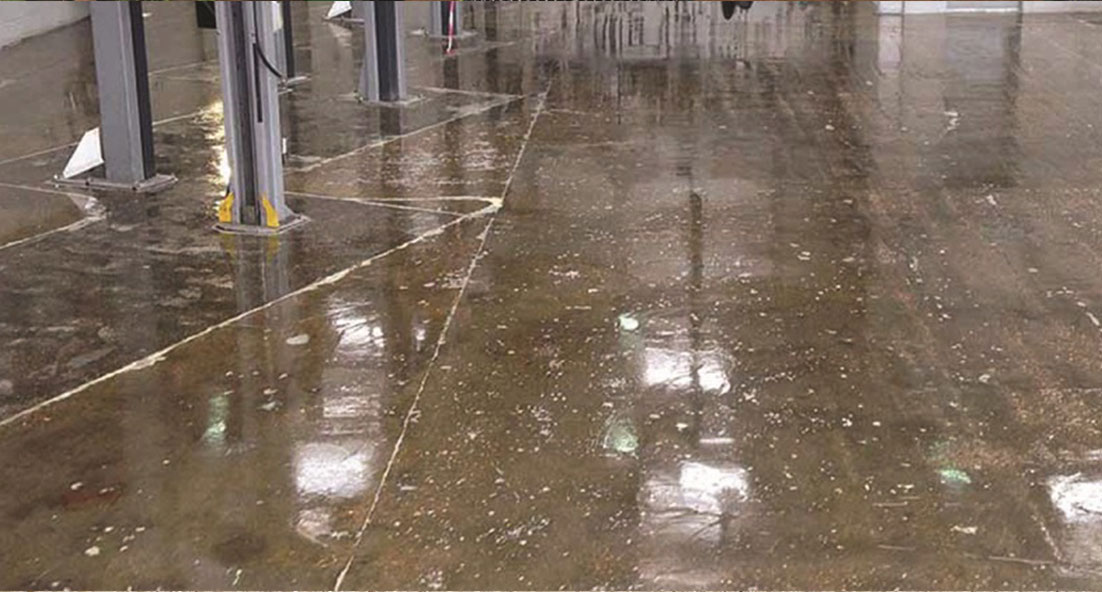
If you are planning to paint a floor or wall then it will be well worth your while to make absolutely sure you do not have any contamination issues, such as grease, oils, fats, chemicals, etc, etc If you do spot and ‘issues’ please be aware that standard paint, even very expensive epoxies, will NOT stick to such a surface and will simply peel and/or at the very least bubble due to lack of adhesion.
A lot of people refer to SURFACE contamination and whilst of course it is very relevant, the surface is only what you can see. What about the contamination WITHIN the substrate??!
Concrete is like a sponge. It is full of air holes. Should you tip a bucket of water onto unsealed concrete, at least 95% will disappear INTO the concrete! This is all very well when referring to water. Over the next few days (the length of time being determined by the levels of humidity in the atmosphere – How To Identify Humidity and/or Temperature Issues, the water simply rises to the surface and evaporates and the floor will become perfectly dry. However, spill oil onto an unsealed floor will never evaporate. Neither can it be fully eradicated with removing the entire section of concrete!! Should you clean the top surface completely of oil, the oil that is within the concrete will then simply rise and the surface become as black as it was in the first place.
As everyone knows, to coat a floor with a twin pack resin coat is the best way of sealing the floor. However, this often only makes the oil situation worse. Due to the fact that it is totally impervious, which of course is great for sealing the floor in the first place, the coating then acts like a plastic sheet placed over grass in the middle of summer. Having had no rain for a few months and with the ground very dry, the plastic sheet draws up the moisture and within a very short space of time, it can be very wet under the sheet. A totally impervious floor coating will act the same way when applied over an oily floor. It only makes the oil rise faster!!
So, now that I have got you all depressed, I can tell you of a coating that can and WILL solve this problem – Degrease the area using Polycote Degrease IT and then seal / prime the surface with Polycote OT Primer – a twin pack epoxy that has been specifically formulated to fully adhere to and seal, oily surfaces. Click on the link and this will take you straight to the product page whereby you can see how quick and easy it is to complete this job.
Whilst I have now made it sound very easy to solve the problem of contamination, OT Primer is no ordinary epoxy. It is a highly specialised, professionally formulated coating designed specifically for the job. Please make no mistake, ‘standard’ / ‘normal’ epoxies will NOT stick to contaminated surfaces!
